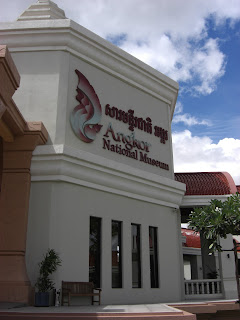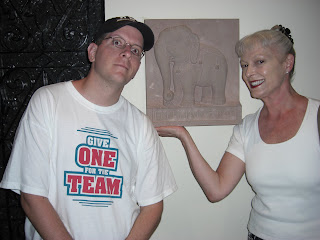Saturday, November 22, 2008
He's a Real Nowhere Man, Sitting in his....
I am starting to get a little stir crazy. When you make your living by traveling from place to place, to be stuck at home is a little numbing. Please do not worry about my finances though, as I have to be paid for 75 hours, or my guarantee, if I do not fly the minimum threshold.
I have been first to go for the past week though so I am hesitant to leave the house for long periods of time in case I get "called up to the majors".
Tuesday, November 11, 2008
SE Asia Slideshow
The Long Journey Home

Monday, November 10, 2008
Tonle Sap Lake
 We spent our last full day in Cambodia on Tonle Sap Lake. It is a huge lake in the middle of the country (to give you perspective, to go from one end to the other by boat would take six hours). The lake is connected to the Mekong River, and is vital to the economy of Cambodia. In fact, UNESCO declared it a biosphere in 1997.
We spent our last full day in Cambodia on Tonle Sap Lake. It is a huge lake in the middle of the country (to give you perspective, to go from one end to the other by boat would take six hours). The lake is connected to the Mekong River, and is vital to the economy of Cambodia. In fact, UNESCO declared it a biosphere in 1997.The lake is unique for two reasons. First, its flow changes twice a year. Second, the portion that forms Tonle Sap expands and shrinks in a dramatic way depending on the rainy and dry seasons. To give you an example, during the dry season, the lake is about one meter deep and covers 2,700 sq. km. During the rainy season, that depth changes to nine meters and the coverage expands to 16,000 sq. km.







Saturday, November 8, 2008
Seeing the sights around town
Angkor Wat
 When we finished up with Angkor Thom, we headed to lunch. It was the perfect time because as soon as we sat down, it started raining hard. Like Biblical downpour hard. Thank goodness we were under a cover.
When we finished up with Angkor Thom, we headed to lunch. It was the perfect time because as soon as we sat down, it started raining hard. Like Biblical downpour hard. Thank goodness we were under a cover.
The named Angkor Wat means "City Temple", and under the rule of Suryavarman, it became the center of religious life for Khmer civilization. In the late 12 century, the Chams (ancestors of the Thai people and long time enemies) sacked the Khmer society and took over the area. When Jayavarman came to power, he adopted Buddhist principles, and then went onto construct his own city at Angkor Thom.
Wednesday, November 5, 2008
Angkor Thom
 Our first full day in Cambodia, we were set for a full day of sightseeing at Ankgor Thom and Angkor Wat. We spent the first part of the day at Angkor Thom, which was the last capital city of the Khmer empire before their decline. It covers 9 square kilometers and actually has several monuments from earlier eras, but was mostly the home of temples built by king Jayavarman IV.
Our first full day in Cambodia, we were set for a full day of sightseeing at Ankgor Thom and Angkor Wat. We spent the first part of the day at Angkor Thom, which was the last capital city of the Khmer empire before their decline. It covers 9 square kilometers and actually has several monuments from earlier eras, but was mostly the home of temples built by king Jayavarman IV. I did not do much reading up on the sites before visiting, so I assumed it was Buddhist. One of the interesting things I learned about Khmer society, was that is started out more animistic, believing that souls and spirits were everywhere in nature. As contact with Indian traders began, they adopted Hindiusm, which is actually the basis for which the temples were constructed (especially more at Angkor Wat which I will blog about next) and then with the arrival of Buddhist beliefs, the Khmer incorporated their Hinduism, to create a mix of the two, rather than dropping one over the other.
If you saw the movie "Tomb Raider" with Angelina Jolie, you will notice that it was filmed in this area. I have never seen the movie, but I think it had a lot to do with renewing interest in these historical sites.
I took anti-bacterial hand gel with me, and gave some to our tour guide, John, which he had never seen or used, but hopefully I got him on the right track to keeping germs off the hands.

As we left Baphuon it started raining, but given how hot we were, it was quite nice. We when to the Phimeanakas temple site after that. It was even older, having been built in the 10th century. It was built as a watch tower. According to legend, the king spent the first watch of every night with a Naga girl (a minor Hindu goddess) in the tower, during that time, not even the queen was permitted to intrude. Only in the second watch the king returned to his palace with the queen. If the naga who was the supreme land owner of Khmer land did not show up for a night, the king's day would be numbered, if the king did not show up, calamity would strike his land.





























